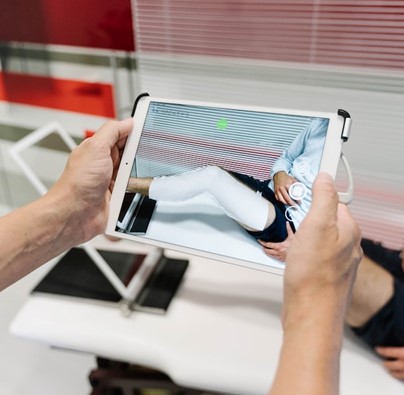Healthcare needs are constantly changing.
People are living longer. Conditions once common become rare, while others require steadfast research to improve treatments. Many patients visit a medical care specialist before a primary care physician.
Some people opt to receive treatment and medical advice virtually without ever stepping foot in a hospital. Welcome to the wild world of healthtech.
Keith Hovan explains that technology is racing to keep up with modern medicine, improve efficiency, and help offer patients access to the care they still need and want. It’s personalized care with a futuristic twist.
And the opportunities are endless. In this brave new world of medical care, technology is leading the way. Here are some of the biggest ways technology is improving healthcare so far.
Efficiency and Better Communication
The rise of electronic health records (EHRs) has gone a long way to improve the safety of care provided by doctors and the speed at which patients can have access to detailed information about their health.
Patients can get test results in minutes online. Medical histories can be transferred in seconds between physicians and specialists around the world.
Medical teams can access the same health information at any given time to collectively make treatment plans through timely information.
Ever have to wait days for a doctor’s office to set up an appointment or provide medical information? That’s quickly becoming a thing of the past.

Access
For far too long, quality healthcare was not available to millions simply because of physical limitations and distance — and often because of sky-high costs. Telehealth is changing the game.
Instead of requiring a visit to a doctor’s office, telehealth now offers an option to significantly lower costs while still getting the level of care that’s actually needed.
This comes in many forms, from virtual doctor’s visits to camera and wi-fi connected technology used by patients to document their health and send back the information for diagnosis. Such approaches greatly lower medical costs and have been shown to reduce the need for visits to an emergency room.
Such remote monitoring tools are usually customized for individual patients and can help those newly experiencing a minor health condition or those who live with chronic illnesses. In many cases, wearable technology has become the norm in monitoring and diagnosing potential health issues.
Reducing Errors
Medical errors can be devastating. Studies have consistently shown that mistakes by doctors or other forms of medical harm have led to the death of more than 250,00 a year. Such errors are often preventable.
In addition to EHRs, digital medical upgrades have been shown to reduce the number of serious medical errors every year. Companies such as DrFirst and Allscripts offer electronic prescriptions. Patient safety is improved via medical alerts and clinical flags noted on patient charts.
Genome Sequencing
In 2021, the first fully complete human genome was sequenced. That wouldn’t have happened with advanced health technology. Now, the information can guide many uses of healthcare technology since it can identify a genetic risk of disease and may lead to better treatment options.

